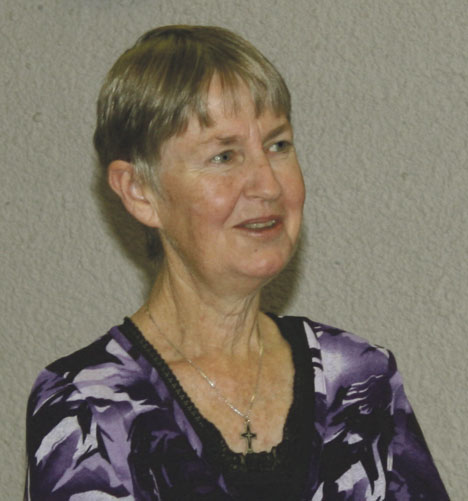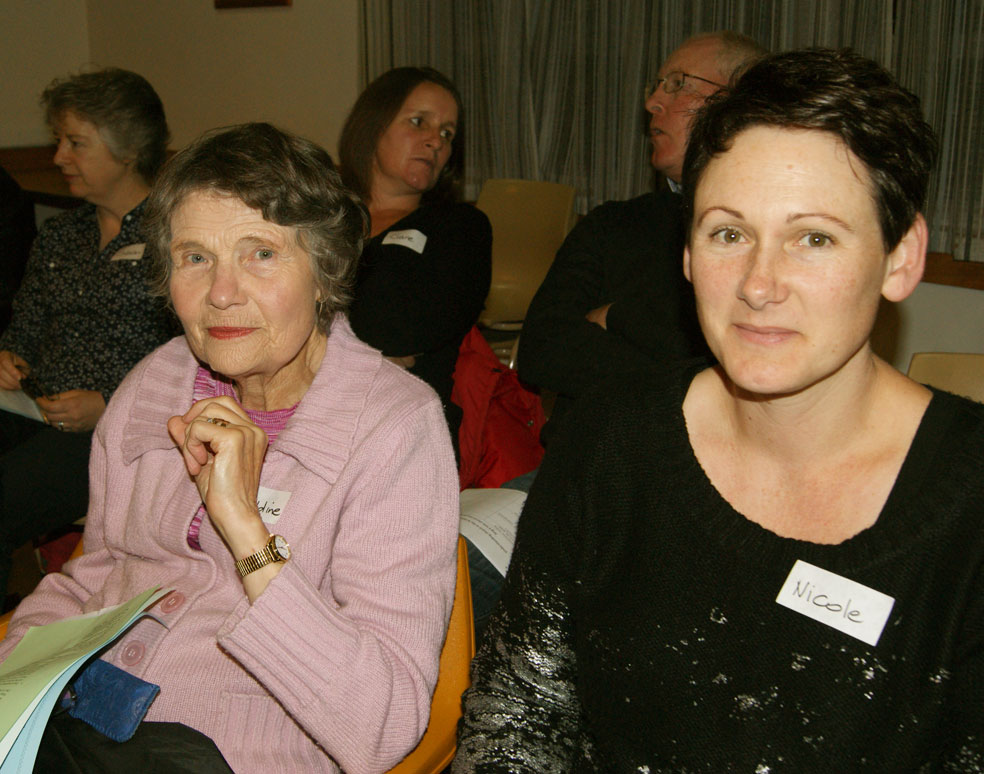 June 2014
June 2014
Church
Elizabeth Julian RSM
Where should we begin the scary task of merging parishes? How do we get our heads around it? Do we hope that ‘they’ have it all sorted and we don’t need to be involved? Or that if we wait long enough it will all pass and we can go back to ‘normal’. The reality is that the merging of parishes is the ‘new normal’. There’s no going back. In this ‘new normal’, mission must be central. It’s God’s mission. God sent Jesus to bring in God’s reign, to continue reaching out to the world. Jesus’ message – in word and deed – was always about the coming of this reign. The mission has a church. We are the church, the community of Jesus’ disciples today. The mission is our responsibility. At the end of the Eucharist we are ‘sent’. So at the heart of reimagining the archdiocese must be mission. Mission, not internal priorities, must be the organising principle.
The merger of parishes is to serve the mission. If we keep the mission on the front burner then building issues assume their rightful place. Buildings are only a means to an end. They are not the starting point. Fundraising to strengthen buildings, although important, is pointless unless we have asked collectively: what has this to do with mission?
Pope Francis has said many times that he wants ‘a poor church for the poor’. He has set the bar high:
I prefer a church which is bruised, hurting and dirty because it has been out on the streets, rather than a Church which is unhealthy from being confined and from clinging to its own security. I do not want a church concerned with being at the centre and which then ends by being caught up in a web of obsessions and procedures.
Today and always, ‘the poor are the privileged recipients of the gospel’, and the fact that it is freely preached to them is a sign of the kingdom that Jesus came to establish. (Evangelii Gaudium #49)
 The 2013 Archdiocesan Promulgation Document suggested that the challenge in our various mergers is ‘to reach out to the margins, the frontiers, the edges of society.’ That’s what mission means: God’s reaching out to the world through us. ‘Our reshaping then must include a commitment to be at the service of the world.’ Fifty years ago Vatican II issued a similar challenge: ‘The world’s problems as well as questions concerning human salvation’ are to be to be discussed and solved in the parish (Apostolicam Actuositatem #10).
The 2013 Archdiocesan Promulgation Document suggested that the challenge in our various mergers is ‘to reach out to the margins, the frontiers, the edges of society.’ That’s what mission means: God’s reaching out to the world through us. ‘Our reshaping then must include a commitment to be at the service of the world.’ Fifty years ago Vatican II issued a similar challenge: ‘The world’s problems as well as questions concerning human salvation’ are to be to be discussed and solved in the parish (Apostolicam Actuositatem #10).
Michael Sweeney [‘Can you tell me what a parish is?’ Chicago Studies 46, no 1 (2007)] says that most of the metaphors used in church teaching to describe ‘parish’, cluster around two poles: first, the ‘community’, family’, ‘home’ of the baptised and place of welcome pole, and second, the outwardly focused, mission beyond itself pole. That is, the parish is the church inserted into the neighbourhood. As Sweeney notes, ‘What a parish is cannot adequately be discussed without a consideration of the society in which it is to be found and to which it is sent.’ (Margaret Ritchie whom we buried from St Anne’s, 8 May, was a much-loved parishioner. Her life was a wonderful example of someone who lived Sweeney’s two poles. She knew what it was to belong and how to be outwardly focused.)
I suggest that Sweeney’s definition offers us a way of thinking about our mergers. (In what follows I use my current parish, St Anne’s Newtown, and the proposed new parish: ‘Effective from 1 February 2016 St Joseph Mt Victoria, St Anne Newtown, St Francis de Sales Island Bay and St Bernard Brooklyn are to become one parish. Current parish churches to be retained.’)
Sweeney’s second pole helps to move the focus off buildings and onto mission. If we were to walk the boundary of the proposed new parish (perhaps we could imagine Suzanne Aubert walking with us) or take a Google Earth view, what would we see?
- Into what neighbourhoods is the proposed parish inserted?
- To what society has it been sent?
- What do the various neighbourhoods look like?
- Smell like? Sound like? Feel like? Taste like?
- Where/who are the sidelined?
- What needs would confront us?
- What gifts do we have to address them?
The first pole would ensure that we know the various strengths of our new parish community. Each member would have named a ministry in which they should be involved.
But how can the individual characteristics, eg, smells, be retained without being overpowered by the smell of the other areas? Our need is to feel at home, to belong, to recognise the new parish as our place because it smells like home. That familiar smell that will, in turn, enable, inspire and challenge us to go out to others.
So it is through being outwardly focused that we will deepen our sense of belonging.
Jesus taught and modelled compassion and concern for those on the margins. We too must live that same concern for whatever the rejected look like in our particular location. Once we all have a developing understanding of the needs of our location, the needs of the society to which we have been sent by our baptism and have begun this outward-focused mission journey, then and only then, should we consider worship/administration spaces and where they should best be situated to further the mission.
Fifty years ago the opening paragraph of Gaudium et Spes, challenged us all to get involved where we are: ‘The joys and the hopes, the griefs and the anxieties of the people of this age, especially those who are poor or in any way afflicted, these are the joys and hopes, the griefs and anxieties of the followers of Christ. Indeed, nothing genuinely human fails to raise an echo in their hearts.
‘It is through this involvement that we will be ‘bruised, hurting and dirty’.